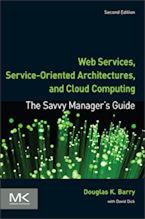Converting the Data and Storing It in an Object Database
If you are in a situation where it makes more sense to convert the relational data to the object schema, then the equivalent views discussed earlier will again be of use. Each of these equivalent views has a corresponding relational view. See checking the class hierarchy.
The relational view can be used to access the data in the relational database. The conversion process, however, will only use the relational views that correspond with the classes at the bottom of the class hierarchy, the leaf classes described earlier. The converted data will be stored in these leaf classes. The classes in the object schema hierarchy above the leaf classes provide alternate ways to view or classify the data that is the equivalent to other views that existed in the relational schema.
To create a conversion program, use the single-valued views (the ones that use only one type code) to get the data from the relational database and populate object instances for the appropriate leaf class in the object schema managed by the Object DBMS (ODBMS). The upside of doing this is that you get the integration and performance provided by the ODBMS. The downside is that you will either convert the existing applications to access the ODBMS through an ODBC or JDBC interface or develop new applications. Many ODBMS products provide ODBC and JDBC interfaces. This allows the object data to appear as relational data, using the view equivalents that were presented earlier.
Leaving the data in the relational database and using an object database. Also see the related content below.
Context for Converting the Data and Storing It in an Object Database
Related Articles for Converting the Data and Storing It in an Object Database
Author
Douglas K Barry
Principal
You may use this material for your work or classes. Reprint Policy. Be sure to check the menu at the left for other articles available on this site.
The Savvy Manager's Guide
Douglas K Barry is also the author of a book that explains Web Services, service-oriented architecture, and Cloud Computing in an easy-to-understand, non-technical manner.
Web Services, Service-Oriented Architectures, and Cloud Computing: The Savvy Manager's Guide (Second Edition)
by Douglas K Barry with David Dick
This is a guide for the savvy manager who wants to capitalize on the wave of change that is occurring with Web Services, service-oriented architecture, and—more recently—Cloud Computing. The changes wrought by these technologies will require both a basic grasp of the technologies and an effective way to deal with how these changes will affect the people who build and use the systems in our organizations. This book covers both issues. Managers at all levels of all organizations must be aware of both the changes that we are now seeing and ways to deal with issues created by those changes.

